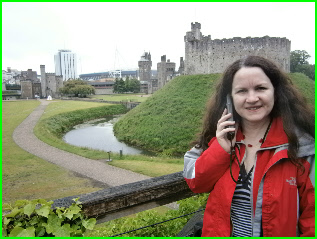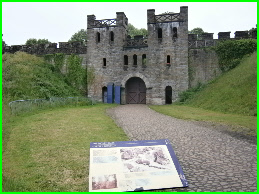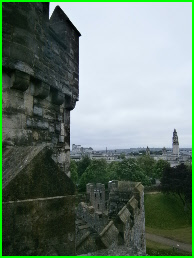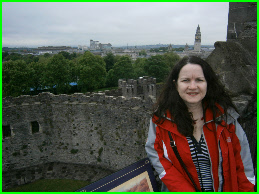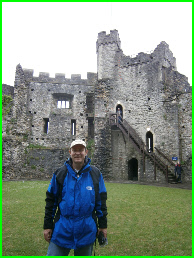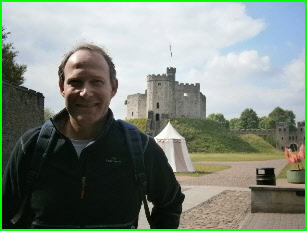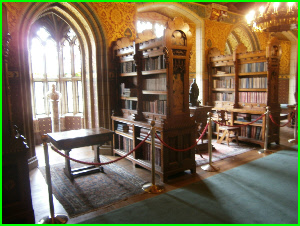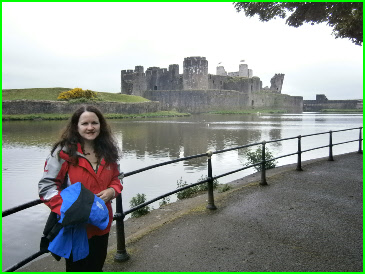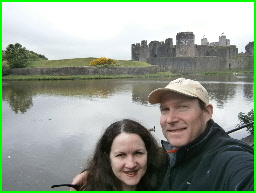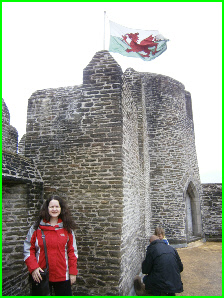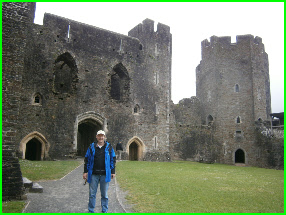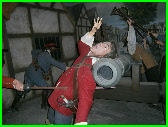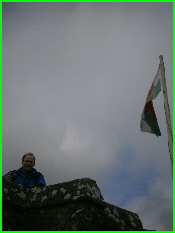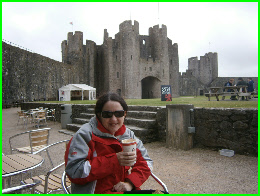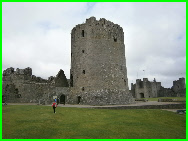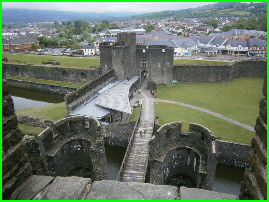
We breakfasted early that day because we had a big schedule! Coco Pops and pastries
did the job for me, and I think Jen had muesli. We had it just in the hotel breakfast
rooms. Not bad. Then we checked out and put our bags in the car, before walking
back down to Cardiff Castle. I’m really glad we belatedly added it to our selection
of attractions, because it is fantastically well restored and preserved, incorporating
elements from Roman, Norman and late Medieval times, and Gothic Revival buildings
from the 1870s. The motte-
Eventually we made our way back to the car, still in the carpark from overnight, but stopped at a Tesco for some rolls and fruit for lunch. Then it was off to Caerphilly Castle, 20 minutes north. This was a wonderful place, partially restored. It’s the biggest castle complex in Britain after Windsor Castle. It’s surrounded by a massive moat in a big park, and we walked quite a way through it from the car park. Lots of geese. The castle had some great displays and reconstructions, and it was easy to imagine medieval life going on there, under the fierce authority of Gilbert de Clare, 6th Earl of Hertford, the ruffian who built the place. They called him The Red Earl because of his fiery temper in battle.
Then it was west towards Pembroke Castle, but we stopped for lunch in Jen’s ancestral
town, Swansea. It was a cold and very windy day there, but we enjoyed our lunch by
the sea and had a bit of a look around. John Rees is said to have come from there
in the 1850s. Pembroke Castle was stunning. It had been largely restored, and had
lots of rooms with good displays in them from different eras. There was one particularly
life-
Then we began the final leg of our journey for the day, an hour or so’s drive to St David’s, way off on the western edge of Britain. It’s very remote, and you can understand why, for centuries, it was terrorised by Vikings. St Davids was a place of pilgrimage in the middle ages and the cathedral there was visited by kings, including William the Conqueror in 1077, Henry II in 1171, and Edward I and Queen Eleanor in 1284. We had a wander around the tiny ‘city’ (just a village really) and then had dinner at the local Indian restaurant, which was delish! Then it was back to our little room in The Coach House. What it lacked in space it more than made up for in charm, with a nice view overlooking main street, and it was nice and quiet there.
